11 Rites of Passage for Every DIY Mechanic
Read all the books you want. Watch all the TV shows and YouTube mechanic videos that have ever been filmed. Sit and have a conversation with everyone who has turned a wrench. You still won’t be a mechanic, because practice and experience cannot be taught.
When younger enthusiasts recount certain adventures (or misadventures) to those with a few more years in the hobby, the seasoned folks will nod along. A mechanic’s rites of passage often need no explaining; by definition, these experiences have become universally accepted as ones that you must encounter and conquer to become proficient.
Which of these 11 rites of passage have you experienced, and which do you think changed you the most?
Rite of Passage #1: Roadside repair with makeshift parts
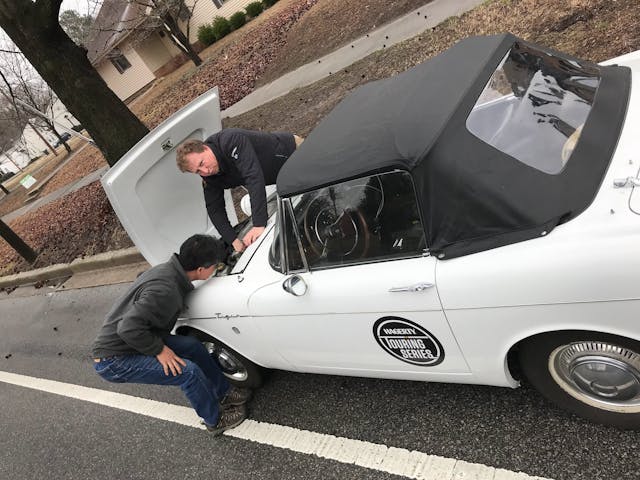
Whether on the road or in the shop, there comes a time when what you have is all you’ve got, and what you have just needs to work. Gaskets cut out of beer packaging, throttle cables made of shoestrings, or bailing wire on a part or piece that should be properly connected, but isn’t … If you understand a system well enough to engineer a functional fix on the fly, you truly understand how that system works.
Rite of Passage #2: Busted knuckles
You know the bolt is about to break free, so you give it a little extra oomph—and slam your hand into something. Usually, that something is heavy, rusty, or sharp … possibly, all three. Keep a record of your last tetanus shot handy, and know that we’ve all been there. Pulling towards yourself is often safer, except when it comes to cutting tools or other sharp implements.
Rite of Passage #3: Trapped tools
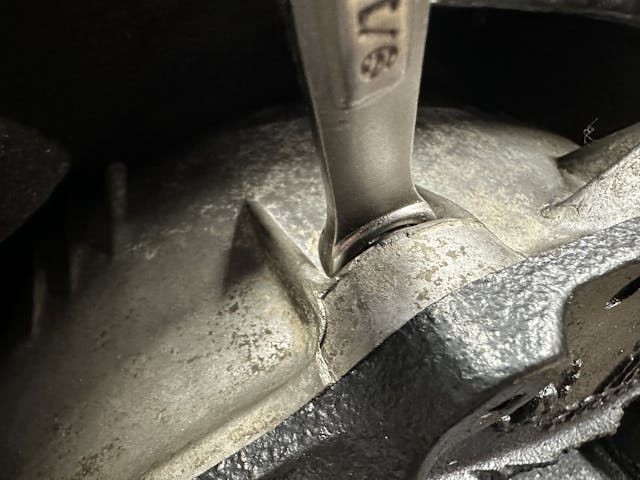
The order of operations during disassembly and assembly is important—but you’ve got to pay attention to your tools, too. We’ve all been in situations when the excitement of a bolt coming loose makes us forget the limited space we’re working with, and suddenly our wrench is trapped between a bolt and a hard place.
Rite of Passage #4: Broken hardware
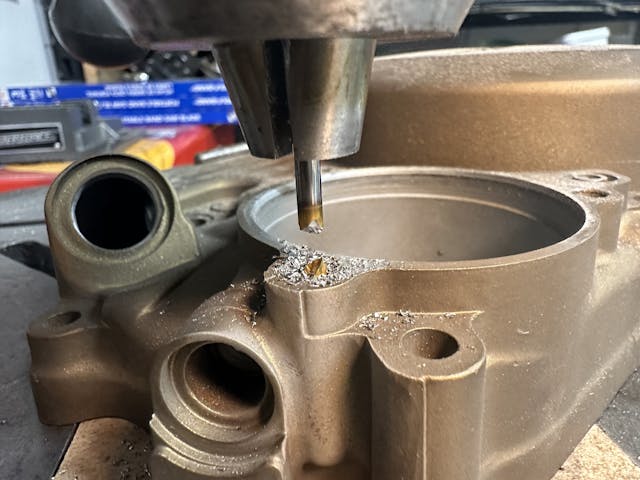
When a bolt chooses to Marie Antoinette itself, or threads stretch past the plasticity point and become unusable, progress can get tough. The fact of the matter is that rookies are more likely to break hardware, but there is a bit of a bell curve: As you tackle more and more projects, the quality of your work often rises; and then, as you gain confidence to handle the problems you now expect to encounter, the quality of your work tends to dip. Learning new methods for dealing with broken and stuck hardware is a never-ending quest for any wrench, green or seasoned.
Rite of Passage #5: Buying the shop manual
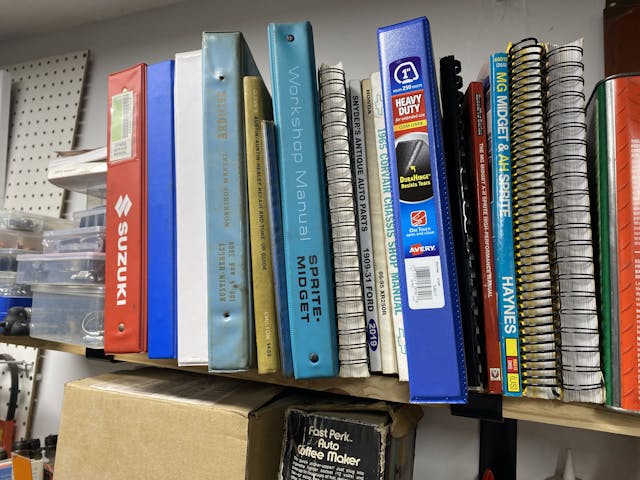
Just about everyone went through a phase when they felt as though they knew everything. Most advance out of such a state to understand that, even with everything they know, the shop manual knows more. Learning just how important and helpful a shop manual can be is often a freeing experience: Buying one is the first step to being self-sufficient because it allows you to solve problems without calling in experts or endlessly searching the web.
Rite of Passage #6: Disappearing parts

How else are you going to learn to organize your shop if you never experience the mildly panicked search for something you sat down right there? Everyone who ever gave you advice about doing DIY work probably told you to bag and tag parts and hardware, but most of us had to learn the benefits of organization the hard way to truly understand them.
Rite of Passage #7: Endless parts search
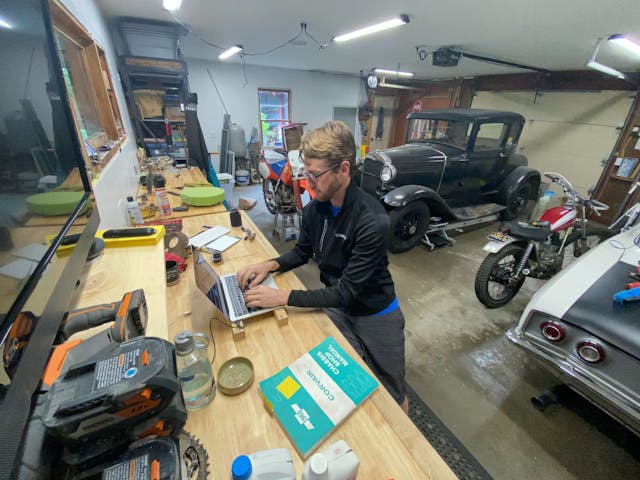
You saw that cool hunk of metal on the side of the road and just had to have it. Now you got it home and are excited to get to work and … Wait, there are no parts available for this? Sometimes the coolest models are the ones with the most problems and buying one that needs everything without realizing none of the parts exists is the gearhead’s version of falling in love with a crazy person: You often can’t give them what they need, and if you try, you’re going to be doing a lot of work (and probably spending a lot of money).
Rite of Passage #8: First rebuilt engine start-up
The thrum of a well-tuned engine is magnificent, but the stutter and cough of one chugging to life for the first time is even more enthralling. Was everything assembled correctly? Was anything forgotten? How is the combination of parts you chose going to work together? It all becomes clear with the first touch of the key. Weathering that storm of nerves is an experience unlike any other.
Rite of Passage #9: Ruined clothes
It was supposed to be a quick, clean job. Now that pair of jeans that used to be nice is stained with oil. (The situation is even worse if you’ve just ruined a pair of pants that your significant other specifically told you not to wear in the garage.) Typically when doing DIY work you dress to protect, not to impress. Hubris may protest, calling that an obvious truth, but the drawer of “work clothes” indicates we occasionally need a reminder.
Rite of Passage #10: Inclement weather moving in

Having a garage is a luxury that some of us take for granted. Most of us started by working on whatever we had wherever we could: Laying on our backs in gravel driveways, sitting cross-legged on the dirt of the back yard, or even leaning over core supports on the side of the street. If the sun was shining when you started work, your lack of protection from the elements becomes obvious as the clouds gather and the wind picks up. Being soaking wet, cold, and/or dirty while trying to assemble or diagnose your car is not fun, but we all must experience this misery to truly appreciate mild weather and good shelter.
Rite of Passage #11: Fixing what is not broken

The excitement to work on a project is sometimes so great that it must be satiated—even when there is work that needs to be done. I personally recall my father giving me the “if it ain’t broke, don’t fix it” speech while in my early teens; I had just made a mess of the garage floor taking apart something that had worked when I started and, more than likely, would never work correctly again. Poor thing.
Do you have to go through all of these to be a decent mechanic? Of course not, but many of us have experienced most, if not all, of these and more. Think we missed a rite of passage that changed you? Let us know about it in the comments below.
***
Check out the Hagerty Media homepage so you don’t miss a single story, or better yet, bookmark it. To get our best stories delivered right to your inbox, subscribe to our newsletters.
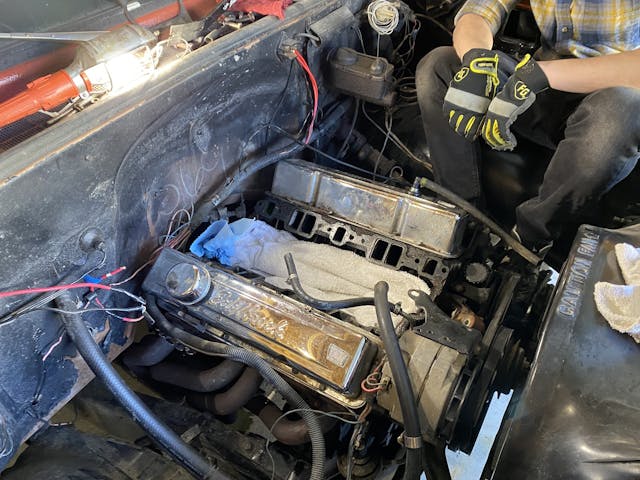


I like #4. I’ve always said, every 20 min job is one broken bolt away from a two day ordeal…
I remember (can’t forget EVER) replacing a slipping clutch on a Fiat 128. My first experience with those cursed transverse engine FWD assemblies, and the heat from the slipping clutch caused the bolts hoding the pressure plate to lose their temper. They didn’t even have the strength to pull the plate in contact with the flywheel before they broke!
I eventually found enough body bolts to get it put back together, but it wasn’t ling before we got rid of that poorly designed and poorly built vehicle.
Stranded on the NJ Turnpike at night… fuel pump died…. think it was a big old Pontiac…. Sooo.. why not divert the fuel line from the tank to the windshield washer pump, and then to the carburetor?… just have to hit the windshield washer switch once in a while to fill up the carburetor fuel bowl !! Worked like a charm!! And got home without blowing up !!
Once upon a time I was driving south on the Alaska Highway in a Ford F250 and the fuel pump quit. . . I tied a flexible water container filled with gas on the roof of the truck and hose connected to the carb. . Gravity feed would only give me about 10 miles per hour. . .no good. Parked the truck and hitched a ride about 150 miles north to Fort Nelson. . .To Ford dealer and bought a fuel pump. . . Hitched a ride 150 miles south to truck. . . Fuel pump wouldn’t fit, wrong pump! . . Hitched another ride 150 miles south to Fort St John and bought another pump from another Ford dealer. . . Hitched a ride back north 150 miles to my truck and installed the new pump. . . It worked! So, that was about 600 miles and about two days of my time. . . . I was a lot younger then!
Perfect score! Still, you missed some big ones. Changing a major component. Opening a major component. Completing a restoration. When your tool box is on the floor, and has wheels. When you can’t think of a friend that could take you to the airport, but can think of half a dozen that would help you put a clutch in. An ait chisel. A welder…….
That finishing a restoration one hits home… A man feels lost when he finishes a restoration and there’s nothing else to do….
After finishing my Model A pickup I felt lost. My wife came up with a mile long list of repairs that needed done around the house but the motivation just was not the same painting the house as it was painting the Truck!
Great stories. 65 VW bus. Headed from CO to FL. At 1AM transaxle scattered gears across the highway. Before left noticed crack case and thought I could fix this with putty steel! Wrong. Next morning hiked up to a phone booth and got hold of a local shop in Wakeeny Ks. Older man w a homemade tow rig jacked up rear of bus and I sat in van to hold steering wheel straight. That man took care of 2 kids from CO. Behind his shop had a used trans that dug out, let us use front of shop to jack up and replace trans. Put us up in his motel and fed us. Used his tools and back on road again! All for under 100 bucks. His incredible generosity and know how helped me realize we are in this all together! We can do this!
I’ve pretty much been through all of these, unfortunately some several times. Speaking of the busted knuckles, I’m laying on the concrete on my back trying to remove the exhaust pipes from the manifolds on my 66 LeMans convertible so I can install duals. Socket wrench, couple of extensions and a piece of water pipe slipped over the end of the ratchet for more leverage. As I’m pulling on the extended handle toward my face just about as hard as I can, the stud breaks off and I proceed to punch myself in the face. I’m stunned for a few seconds and my face is numb. I put my hand to it and come away with a little blood so I slide out and use the rearview mirror to see just how bad I split my lip. Instead of a split lip there is a half circle gash in my cheek where the end of the water pipe had sunk in. Had to set the tools down and go to the local Dr’s office for a couple of stitches.
If you’re going to drive old cars, which I continue to do by choice, you need to know how to fix them.
I’ve been through all of these. #5 became really easy during my almost 30 years working at Helm, Inc. (source of Ford & GM service and owner manuals). Buying my first shop manual from Helm in 1966, I never expected to work there 22 years later. Driving to and from Helm in Highland Park, MI also provided some drama — I fondly recall having transmission problems more than once, but I managed to avoid roadside towing.
Driving home after Christmas 1973 in Traverse City. Mom, two young kids (one in diapers), and me in our new Corolla. Cold, damp, winter day. Car kept getting slower and slower. Pull over and think and get back out. Would run fine for ten miles. Slowing again. Think!!! Carb icing up! Wrap a diaper around the carb (watch the throttle linkage!) to keep engine heat in. Sailed home to Decatur Illinois fine! Example of using what you have on hand. BTW, I’ve done every one of the listed education items…and many more!
I’m still early enough that #14 still happens regularly. Heavenly.
This goes hand in hand with the “If it’s not broke, don’t fix it” but my dad always told me “I just couldn’t leave stuff alone” while he was helping mend whatever poorly modified part I was installing on my car. This rings in my head nearly every time I’m turning a wrench now.
Over the years I have learned to buy only the fasteners and the quantity of fasteners that I need for the “ portion” of the project that I am presently working. Too much time is lost and frustrations mount as you say to yourself “ I know I have these fasteners someplace!” Besides, your local hardware store pays someone to keep the fasteners nicely packaged and in order! Buy only what you need for each portion of the project. AND any extra fasteners you have leftover from your project….. throw them away! The hardware store has some more.
Unless you’ve changed a fuel pump on the side of the highway late at night or anything similar, books and videos around auto repair are an abstract concept.
You didn’t say anything about “lost” tools. I own–and work on–a 74 450SL. Sometimes, when I get frustrated with a problem, I will throw a tool across the garage. Then, I go looking for it where it landed in a fairly open spot. It’s not there. BTW, the tool is usually a 10mm socket. After searching the garage for a couple hours, I go out and buy another 10mm socket. Guess what? There is the former 10mm socket in plain sight when I get home!
Yep, I’ve hit all 11 of them- and a long time ago. Like the others, been working on some “new” ones as well! Personally, I think looking for; tool, part, the whatzit that I just set down, has got worse as I’ve got older.
What is it with 10mm sockets? I also have problems with 15mm sockets and wrenches. I think every set should come with a spare or two or three!
One that seems no one has mentioned is the experience of loosing a bolt down in the engine bay that I can’t find for the life of me. I had it, it dropped, I looked under the car, I looked around the car, I’ve put my hands in places like I was noodling for catfish and yet I can’t find that stinking bolt!
Also another one is starting with what you think are good tools only to have time and experience teach you that you truly get what you pay for. There is nothing like having quality tools and even more satisfying is having the right ones for the job!
How many of us have balanced a transmission on a floor jack for years only to finally get to do one with a transmission jack? Oh and after working for years with your back to the ground in tight spots and then seeing what it’s like to work with a car lift!
Oh and what about telling yourself you’ll only buy this one car only to find yourself with 5 of them a couple years later? Or buying a “parts car” and then telling yourself it’s in too good of shape to use for a parts car and it becomes the side project.
I could go on and on…. Like when you tell yourself you have a budget when you start restoring a car! Then somewhere down the line you just stop keeping track of the numbers and just toss the receipts in a file folder or box and you don’t want to ever sit down with a calculator and those receipts with the wife in the house.